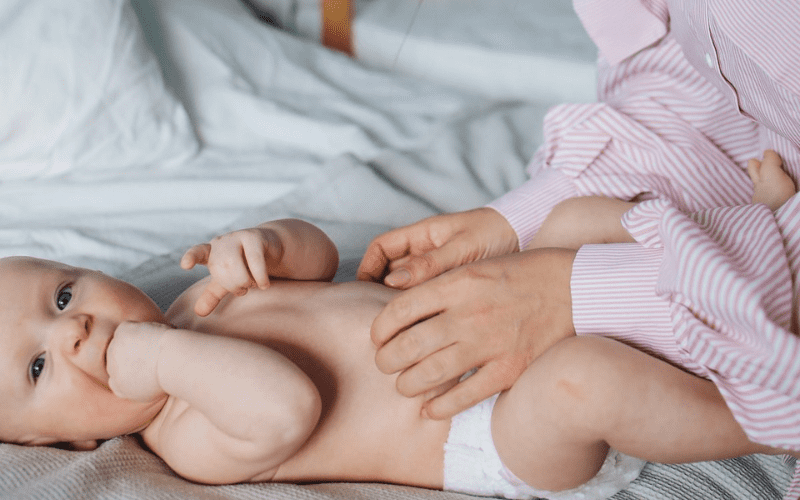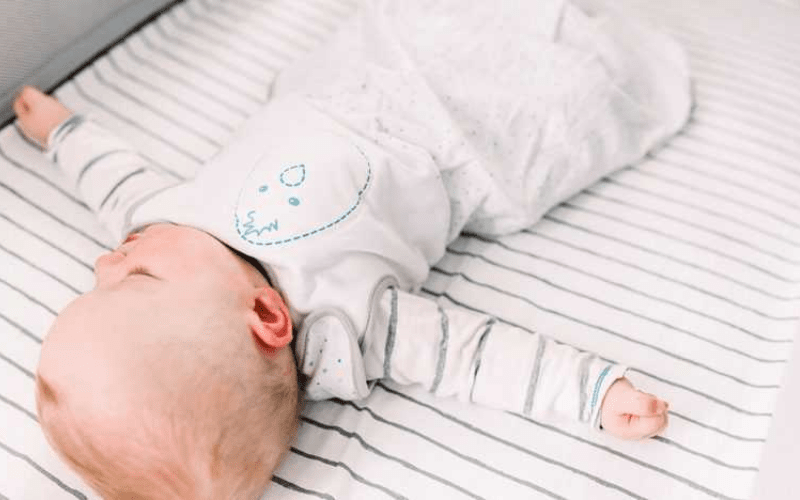Are you wondering how to dress your baby to help them sleep safely and comfortably at night?. We have helped many families prepare their little ones to sleep through the night and take great naps. And we’re excited to help you dress your baby for Sleep to minimize unnecessary wakes. Just like us, our children are sensitive to temperature fluctuations in their room, but they can’t do anything about it and rely on us to get it right for them. Our babies often wake up due to being too hot or too cold. Often, these wakes can mistaken for hunger or a settling issue.
Tips for best Baby Sleep
Unfortunately, habits can quickly formed, but we can help prevent some unnecessary wakes. This is especially true between 4 am and 6 am, in the coldest part of the night, and in some instances, being too cold in the morning can be the culprit of that dreaded early morning wake. We will share 3 of our top tips so that you can dress your baby properly for the best Sleep.

Tip #1
Safe Sleep – before you even consider what to dress your little one in, we must ensure they’re safe. Now, in the context of dressing your baby for Sleep, that means no loose blankets, no hats or mittens, and not too many layers to cause overheating. To help follow these guidelines of safe Sleep from the American Association of Pediatrics, we’ve included a link to our Safe Sleep Checklist; please download this if you need clarification on the Safe Sleep Guidelines.
Tip #2
The Room Temperature. Like many topics on infant sleep, you will find many different recommendations on the appropriate room temperature for your little one. We recommend having the room temperature between 65 and 72 degrees Fahrenheit – between 18 and 22 degrees Celsius. The sweet spot is around 68 degrees Fahrenheit or 20 degrees Celsius. However, we know it’s only sometimes possible to achieve for families. For example, our houses in New Zealand are not built for the cold, and our rooms can lose heat quickly, so we can have a more challenging job controlling the temperature.
It’s not something we want you to stress about, and there’s an element of using common sense, but depending on the room temperature, you will need to adjust the layers of clothing you dress your baby in and the weight of their sleep sack. Some baby monitors have a built-in room temperature gauge, or you can use a simple room thermometer.
Tip #3
Sleepsacks & Clothing: We know we’re all different; some of us run hot, while others feel the cold, but if you’re tired and unsure, we’re speaking to you. Starting with Sleepsacks, we always recommend dressing your little one in a sleep sack after you no longer use a swaddle blanket for multiple reasons. The ability to keep your little one consistently warm as the nights get colder is an excellent cue and sleep association that you can incorporate into your bedtime routine. You may find a TOG rating reference on the packaging when you purchase a sleep sack. TOG stands for Thermal Overall Grade, a unit of measurement for insulation and warmth of sleepwear and bedding.

In other words, it’s a number that tells you how more warm a garment will keep your baby – the rating the number, the more pleasent your little one will be when wearing the garment. For example, sleep sacks range from 0.5 tog, which would used in the summer, right up to 3.5 tog or beyond, a heavier weight for winter. To take out the guesswork, we’ve created a chart. This gives you a guideline of how many layers to dress your child in, depending on the warmth of the sleep sack. This is only one aspect of establishing healthy sleep habits for your little one.
Read More: Breastfeeding for Both Mother and Baby
Dress Your Baby for Safe and Sound Sleep
For parents and caregivers looking to ensure their baby is dressed appropriately for sleep. There are several practical suggestions and resources available. Firstly, it’s important to consider the temperature of the room where the baby will sleeping and dress them accordingly avoiding overdressing or underdressing. A general rule of thumb is to dress the baby in one additional layer than what an adult would wear in the same environment.
Additionally utilizing sleep sacks or wearable blankets can provide warmth without the risk of suffocation from loose bedding. Remember every baby is different so observing your baby’s cues and comfort level is key. With a bit of knowledge and attentiveness. You can ensure your baby is snug and safe for a peaceful night’s sleep.


